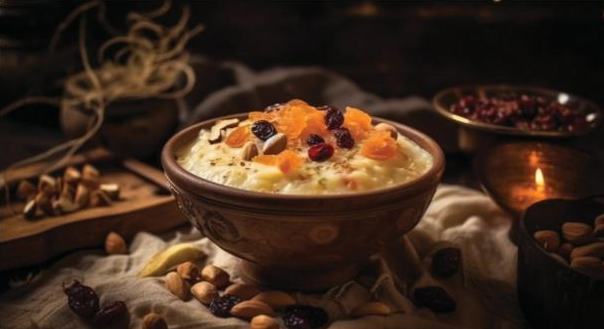The Delectable History of Diwali Dishes

The festival of Diwali dates back to ancient India around 500 BCE with a host of traditions woven into its fabric over centuries. Particular importance is given to the food that's cooked and consumed during this festival, with specific sweets and savories forming a significant part of the celebrations.
The variety of dishes prepared during Diwali symbolises the unity in diversity found in Indian culture, as each regional community contributes its unique flavour to the festival’s menu.
Among the most traditional foods is the sweet dish ‘Kheer.’ Originating from ancient India, Kheer is a rice pudding that finds mention in the Ayurveda, suggesting it has been part of Indian cuisine since 400 BCE. This delicious dessert’s preparation involves rice, milk, and sugar, with garnishings of saffron, dried fruits, and nuts.
Another popular Diwali dish is ‘Samosa.’ This savoury pastry has a historical journey that traverses centuries. It originated in the Middle East, and by the 13th-14th century, it made its way to the Indian subcontinent via trade routes (Collingham, 2006). Samosas are served during Diwali and are filled with a variety of fillings ranging from potatoes and peas to lentils and meat.
‘Diwali Faral,’ from the Indian state of Maharashtra and the western part of India, is a collection of sweets and savouries made during Diwali. It includes items like Laddu, Chakli, and Chivda, each having their histories tied to Indian mythology and ancient culinary practices. Laddus, round sweet balls made of various ingredients, are associated with the Hindu deity Lord Ganesha, who is revered during Diwali.
Sweets like ‘Gulab Jamun’ and ‘Jalebi’ also have fascinating origins. Gulab Jamun has roots in the Persian tradition of luqmat-al-qadi, which Indian cooks tweaked over centuries to make it one of the country’s most beloved desserts. Jalebi, with its characteristic spiral shape, dates back to the mediaeval era and originally came from the Middle East.
In the Southern region of India, ‘Murukku,’ a crispy fried snack made from rice and urad dal flour is popular during Diwali. The recipe finds its mention in ancient Tamil literature dating back to the 1st Century AD, making it one of the oldest snacks known to the region.
The cuisine of Diwali is a testament to the rich tapestry of India’s culinary history and culture. Each dish on the Diwali menu, sweet or savoury, has a story to tell, rooted deeply in the country’s historical and cultural landscape. Celebrating Diwali with these traditional foods connects the present with the past, making the festival even more special.
In essence, the dishes of Diwali echo the joyous spirit of the festival. They carry the whispers of ancient traditions, the warmth of home, and the sweet taste of celebration. As we approach the Diwali season, let the taste of these dishes draw you closer to the history they embody and remind you of the rich culture that they represent.